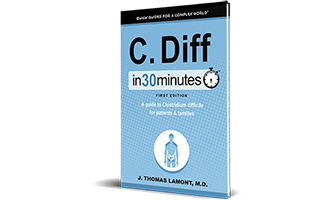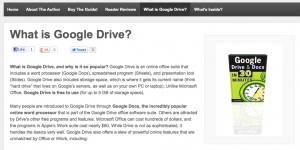 In mid-2013, my publishing company released its first medical-related title, C. Diff In 30 Minutes: A Guide to Clostridium Difficile for Patients and Families. Publishing a C. diff book for patients and their caregivers was a risky proposition. At the time, there was only one other similar title available on Amazon, which didn’t appear to be selling very well, judging by the the publicly available sales data that Amazon displays.
In mid-2013, my publishing company released its first medical-related title, C. Diff In 30 Minutes: A Guide to Clostridium Difficile for Patients and Families. Publishing a C. diff book for patients and their caregivers was a risky proposition. At the time, there was only one other similar title available on Amazon, which didn’t appear to be selling very well, judging by the the publicly available sales data that Amazon displays.
But we had a few things going for us: A well-respected international C. diff expert, Dr. J. Thomas Lamont, was the author of the book (yes, he was easy to recruit – he’s my dad!). We used an easy-to-understand structure that featured practical information as well as case studies based on the author’s extensive experience with patients. I created a solid website with lots of resources for browsers, including a simple guide to what is C. diff, a list of C. diff symptoms and a resource describing basic C. diff disinfectants and procedures for healthcare workers and patients.
I also priced C. Diff In 30 Minutes competitively. It was hard to justify the same cover price as the competing title, which was much longer and had several reader reviews in mid-2013. On the other hand, C. Diff In 30 Minutes wasn’t some Kindle freebie. It contained expert information that can help patients understand and cope with a little-known but devastating gastrointestinal infection. I priced the ebook at less than $10, and the paperback under $15 (which was often discounted).
The result? The guide has been a steady seller almost since launch. With almost no promotion beyond a few hundred dollars in Adwords, the book has sold nearly 1,000 copies, generates a nice revenue stream for the author and my publishing company, and has gotten consistently high reviews from real customers (to date, almost all reviews have been 5-star reviews). Here are some samples:
KS:
“When I learned in 2013 that I had c.diff, I found this little book to be a lifesaver!!! Many doctors don’t know what to tell patients regarding the best ways to treat c.diff, but from guidance in this book, it was a slow process, but I was able to fully recover in roughly 6 months. The book is WELL WORTH its nominal cost!”
Linda:
“This has been the best information yet. I am a former c diff patient. My mother is currently hospitalized with it. We now know what to do for her and how to protect others over the next few months.”
Publishing other types of health books?
The second reviewer also noted that she was glad we had published books “other than computer books.” This naturally made me wonder: What other health/medical titles could we publish? These require a certain degree of expertise and/or deep experience. Unfortunately, doctors are hard to recruit for these projects, mainly because they are so busy (as you may have guessed, C. Diff In 30 Minutes is written by a relative, and he’s too busy to do another one). I had another potential writer with expertise in Alzheimer’s, but he backed out later when he made a cross-country move.
As for C. Diff In 30 Minutes, I hope to expand distribution to hospitals, nursing homes, and healthcare workers. We may also have to release an update in the next few years to cover fecal transplants, which have really taken off since 2013.
